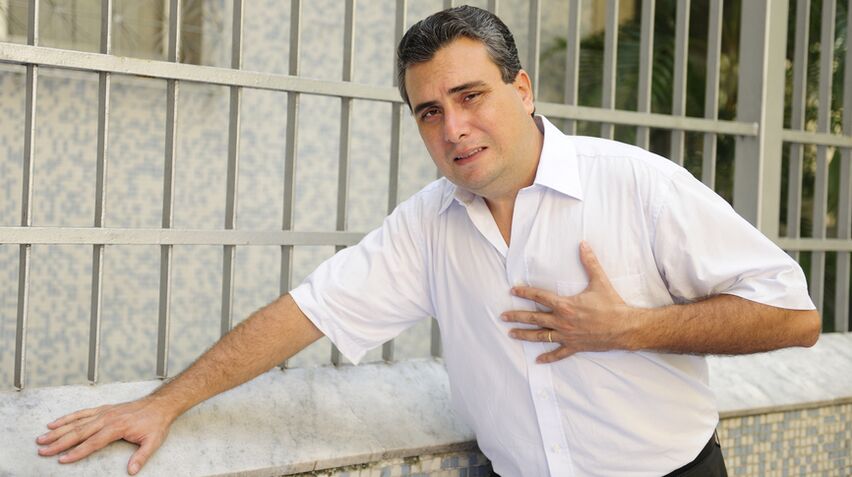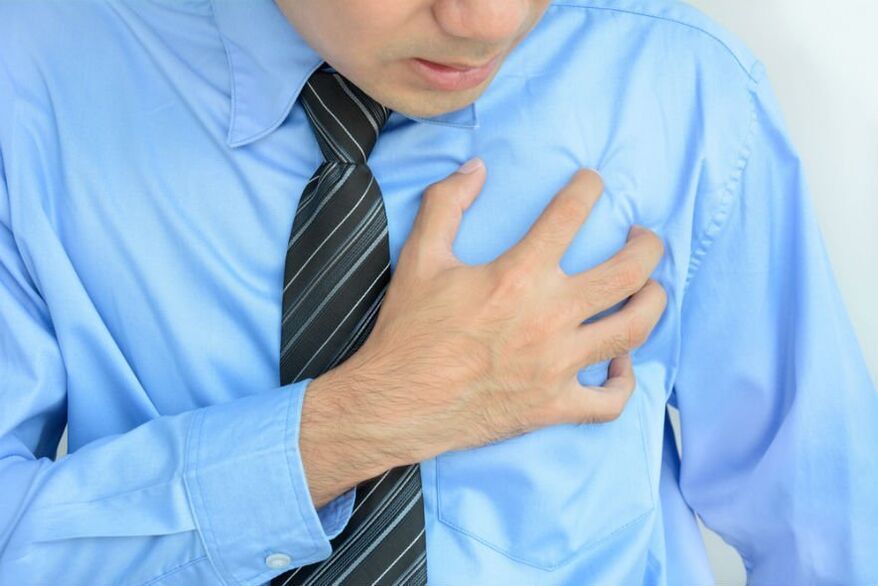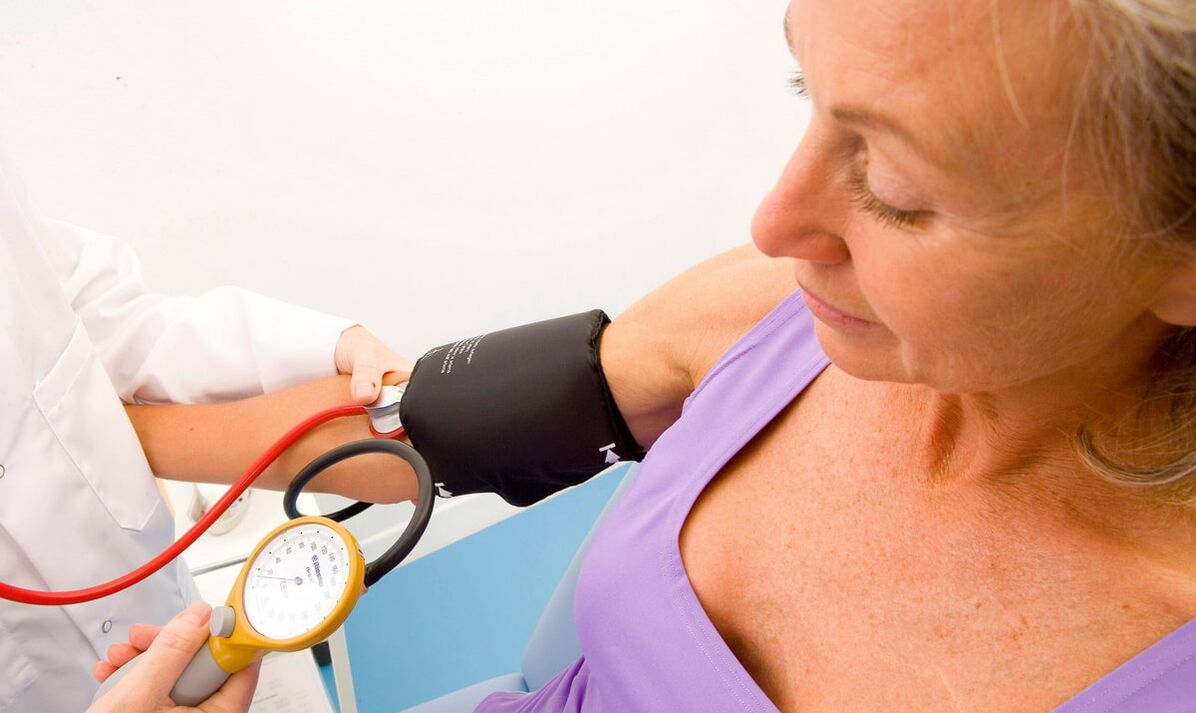
Pain in the heart area forces the patient to see a cardiologist. Anxiety, irritability and fear for one's own life arise. But not all signs of discomfort are directly related to heart problems. Even osteonecrosis of the chest - symptoms, sensations - pain in the heart often causes diseases of this organ.
Pain behind the sternum, near the back or even the diaphragm when the vertebrae are affected can often occur, regardless of the stage of pathology. And the mechanism of unpleasant symptoms has a number of characteristics.
Mechanism of symptom development
Disruptions in the heart during osteonecrosis cannot occur on their own, they develop only as an echo of the underlying disease:
- Thinning of intervertebral structures. The space between the bone and cartilage elements narrows, leading to restricted nerve roots. As a result, painful sensations are formed, when destructive processes occur in the thoracic or cervical spine, often spreading to the heart.
- Changes in the heart muscle. Due to this disease, sensations spread throughout the heart muscle, called "echoes" of pain.
- Involvement of the upper limbs in the process. The effects of cartilage degeneration on the heart may be due to overstretching of the arm muscles. As a result, pain is transmitted to the heart muscle but the electrocardiogram shows no abnormalities.
- Changes in the structure of the lumbar region. The position of the organs in the abdomen changes, leading to increased stress and changes in heart rate.
- Muscle spasms and changes in blood circulation. Osteonecrosis heart attack occurs due to changes in blood flow in the large arteries in the back. Heart rate increases as blood needs to be pumped through a narrower passage.
- The intervertebral disc is seriously destroyed. Nerves are compressed, leading to pain in the heart area. Hypoxia gradually develops. It also includes brain activity, as a result of which the normal functioning of internal organs is changed.
- Due to arterial compressionand nerve fibers, high pressure may appear. Because of this, painful feelings appear in the heart.
You can distinguish heart pain from manifestations of osteoarthritis by certain symptoms.
Signs of osteonecrosis with pain
Cardiac syndrome - pain in the heart due to osteonecrosis of the chest area - develops in many patients. Symptoms will have the following characteristics:
- the pent-up pain and depression in my heart;
- the feeling of discomfort increases gradually, silently, not too clearly;
- the pain lasts long, overwhelms the chest area, causing palpitations;
- There is no feeling of severe pain due to the destruction of the cartilage between the vertebrae;
- Almost always, a symptom such as a feeling of warmth behind the sternum helps distinguish a heart attack from osteoarthritis;
- Heart medications (nitrates) do not provide pain relief;
- If a person begins to move his upper limb, the pain will increase.

If the cervical spine is involved in this process, you will feel pain in the vertebrae area.
Some patients note that the pain is of a different nature: a feeling of discomfort covers the left side of the sternum, affects the muscles, sometimes spreads to the shoulders, neck and face, the attack can last several days.
If compression of the vertebral artery occurs, other symptoms will appear: weakness, dizziness, rash, and in severe cases the patient loses consciousness. In addition, with pain in the heart, hearing and vision are impaired, blood rushes to the face. If a person takes medications for high blood pressure, they will not help him or her.
Differences in pain
There are several ways to differentiate a heart attack from osteoarthritis; The main method is MRI and ECG examination.Additionally, you should know what happens with damage to the thoracic cartilage between the vertebrae and what doesn't happen with heart disease:
- The pain is moderate, gradually increasing and lasting. During a heart attack, symptoms will be more severe;
- if you press your chin to your chest, the pain from osteonecrosis will increase;
- If the pain increases with movement and exercise, this is osteoarthritis;
- With pain in the heart, panic, fear and anxiety always arise.
Neuralgia itself is safe, but can intensify when the body leans in different directions or when making sharp turns. You can relieve pain with pain relievers.
Severe heart disease and osteoarthritis
You need to know how the heart hurts when you have osteoarthritis in the chest area, especially to distinguish neuralgia from life-threatening conditions. In chronic ischemic heart disease, the pain occurs very severely, within 3-5 minutes. The feeling of urgency does not allow breathing and after taking nitrates, the symptoms disappear immediately.
If the risk of myocardial infarction is high, you need to remember that in this condition the patient may lose consciousness, experience nausea and acute chest pain. The pain caused by osteonecrosis has never manifested itself in such a profound way.
But with VSD (dystonia), symptoms can be similar. However, unlike pain in the heart caused by osteoarthritis, with this pathology a person has a fast heart rate, slow heart rate, a feeling of fear, quickly gets tired and feels constant weakness. The pain is often sharp and dull. When there is osteochondrosis, it will be compressed.
Palpitations
With osteoarthritis, the heart can not only be damaged, but also be bothered by angina, arrhythmia and tachycardia. This occurs due to spasm and compression of the artery.With osteoarthritis, the following features appear:
- increased heart rate at rest, increased heart rate during exercise;
- smooth, uninterrupted rhythm;
- Heat wave-like attacks;
- Tachycardia may accompany presyncope.
Symptoms will disappear if quality treatment of the disease is carried out.

Foreign systolic
Extrasystole is a condition in which there is a second feeling of cardiac arrest. With osteonecrosis, this complication causes real panic. However, this abnormal condition is normal for the human body. True, most people do not notice this process.
Extrasystole is a kind of "rest" in the work of the heart muscle. Surprisingly, such short breaks are very important for the agency.
Such "pauses" happen to everyone, regardless of their age, weight and daily physical activity.
Pressure in osteoarthritis
Among the symptoms of thoracic osteoarthritis is often high blood pressure. But this pathology may have other reasons. With osteonecrosis, arteries, veins and blood vessels are compressed, nutrition of the brain and other organs deteriorates.

The patient started taking medication to solve this problem, so blood stopped flowing to the brain again. Oxygen starvation and nutrient deficiency develop. A person is tormented by symptoms such as: weakness, drowsiness, pain and dizziness, pale skin, nausea.
Coping with painful feelings
Once a heart attack can be distinguished from osteochondrosis, the treatment of the disease needs to be differentiated. If all symptoms are related to damage to the thoracic spine, then medication cannot be used to reduce pain in the heart.
Therapy should eliminate the causes of osteoarthritis or minimize them. It has been proven that regular, systematic treatment reduces tension, spasms and tension in nerve fibers.Since the heart and cartilage degeneration are closely linked, treatment should begin with the spine during an exacerbation:
- The person should not move around much; should rest in bed.
- To relieve acute pain, NSAIDs or glucocorticosteroids are prescribed.
- Local drugs are also used, which relieve pain caused by osteoarthritis.
- Physical therapy helps treat the early stages of the disease but is rarely used to relieve pain. Only during recovery after an exacerbation.
- Manual therapy is a very effective method of spinal rehabilitation, reducing spasms, tension and swelling of surrounding tissues.
- Exercise therapy and useful sports for osteoarthritis of the thoracic region are also indicated.
- In addition, you can use folk recipes - baths and compresses - they are very relaxing and have a positive effect on the patient's emotional state.
- A diet is equally important in the treatment of osteoarthritis. Adequate intake of plant foods, healthy fats and protein is essential to repair damaged tissues. A balanced diet also helps you lose excess weight.

The best way to determine if you have osteochondrosis or heart disease is to have a physical exam. With the help of simple X-rays and electrocardiograms, you can understand which sensations are associated with a particular disease.












































